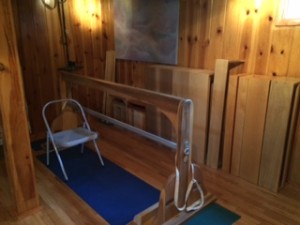Choosing a yoga teacher is an important first step in beginning a yoga practice. There are many “brands” of yoga available. The certification requirements range from nationally standardized certifications to individual studios that are under an umbrella of a national organization. Some yoga organizations require their teachers to have a minimum number of hours of continuing education annually while some have continuing education requirements based on a three year cycle. There is even one teacher training site that gives only online training consisting of 17 lessons for $69.95.
The primary reason for choosing a particular yoga teacher or method is your safety in the class. A competent teacher will know how to make adjustments for you in class that allow you to perform asanas according to your physical ability. Additionally, not all asanas are for all people all the time. A competent teacher will know when a particular asana is inappropriate for you and will give you an alternate asana.
A comparison of three of the most well known systems in the U.S. are Iyengar, Yoga Alliance, and Bikram. Yoga Alliance has a 200 hour certification program and a 500 hour program. The teacher trainings are done by independent studios with only broad guidelines regarding curriculum. Continuing education is based on a three cycle with much of it that does not include contact time with a senior teacher. Many of the teachers with Yoga Alliance recognized certifications are not well versed in the use of props other than non-skid mats and blocks. (Props are specific pieces of equipment that aid in modifying the classic asanas to make them more accessible.) Bikram teachers receive a 60 day training for certification in classes of a few hundred. They use only mats, and hands-on adjustments are not permitted except by Bikram or his senior teacher. The rooms are also to be kept at 105 degrees with 40 percent humidity. Re-certification is required every three years. The Iyengar certification process is divided into multiple levels of certification with testing for each level that includes a list of specific asanas for that level. This process is administered by a the Iyengar Yoga National Association of the U. S. Iyengar yoga teachers are taught to use an extensive array of props as well as the correct way to make hands on adjustments. The testing process allows for only 8 to 10 candidates at a time with 3 assessors scoring each candidate. The continuing education requirement is 25 hours of contact time with a more senior teacher per year.
The method of yoga is not always an indicator of a teacher’s competence; however, it is a place to begin. The method of yoga also gives you a clue about whether the teacher will be able to accommodate any special needs that you may have. Below are photographs of props in a typical Iyengar yoga studio.


